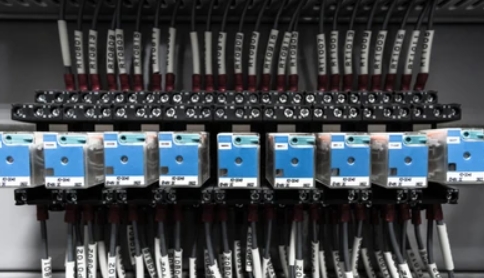In the world of electrical and electronic systems, fuses and relays play crucial roles in ensuring safety, protection, and efficient operation. While both are used to control the flow of current, they have distinct differences in terms of their construction, functionality, and applications. In this article, we will delve into the key differences between fuses and relays, exploring their unique characteristics and practical applications.
- Construction and Functionality:
Fuses:
Fuses are essentially protective devices designed to interrupt the flow of current when it exceeds a certain threshold. They consist of a metal wire or strip that melts when subjected to excessive current, thereby breaking the circuit and preventing damage to the connected components. Fuses are typically one-time-use devices and need to be replaced after they have operated.
Relays:
Relays, on the other hand, are electromechanical switches that use an electromagnetic coil to control the flow of current in a circuit. They consist of several components, including an electromagnet, contacts, and a spring. When the coil is energized, the contacts are either opened or closed, allowing or interrupting the current flow. Unlike fuses, relays can be used repeatedly and are not affected by the current passing through them.
- Applications:
Fuses:
Fuses are commonly used in electrical systems to protect sensitive components from overcurrent conditions. They are widely employed in residential, commercial, and industrial applications, such as in power distribution panels, electrical appliances, automotive circuits, and electronic devices. Fuses provide reliable protection against short circuits and overloads, preventing potential fire hazards and equipment damage.
Relays:
Relays are primarily used for controlling high-power circuits or switching operations in various applications. They are extensively utilized in automation systems, automotive industry, telecommunications, and industrial machinery. Relays enable the control of multiple circuits using a low-power signal, allowing for efficient and safe operation of complex systems. They are also employed in applications requiring time delay, sequencing, or isolation between circuits.
- Advantages and Limitations:
Fuses:
- Quick response time to overcurrent conditions, providing effective protection.
- Simple and cost-effective solution for circuit protection.
- Limited functionality beyond current interruption.
Relays:
- Versatile functionality, allowing for control and switching of multiple circuits.
- Ability to handle high-power loads and complex control operations.
- Relays consume power to maintain coil energization and may have mechanical wear over time.
Conclusion:
In summary, fuses and relays are essential components in electrical and electronic systems, serving distinct purposes. Fuses provide reliable protection against overcurrent conditions, while relays enable control and switching operations. Understanding the differences between these two devices is crucial for designing and maintaining safe and efficient systems. By utilizing fuses and relays appropriately, engineers and technicians can ensure the longevity and reliability of electrical installations.



Average Rating